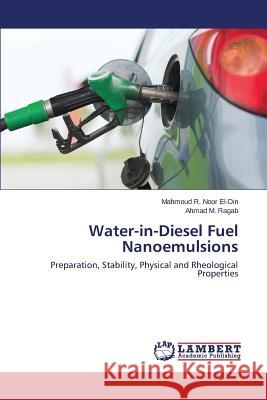Water-In-Diesel Fuel Nanoemulsions » książka
Water-In-Diesel Fuel Nanoemulsions
ISBN-13: 9783848426881 / Angielski / Miękka / 2014 / 104 str.
Over the last few years, the price of the fuel is the main factor affects the consumption and the economy. Even when crude oil prices are stable, the fuels prices normally fluctuate. Additionally, diesel engines are considered a major source of air pollution in cities and urban areas because of their black smoke, nitrogen oxides, particulate matters, sulfur oxides, carbon dioxide and carbon monoxide emissions. Many researchers try to solve these problems using newly alternative fuels. Water-in-diesel fuel nanoemulsions are considered one of these newly alternative fuels in use. Fuel emulsification with water has been considered an effective technique for reducing emissions and enhancing fuel combustion efficiency for diesel engines. In this work, water-in-diesel fuel nanoemulsions with mean droplet size (49.55-190.1 nm) were prepared by mixed nonionic surfactants. The interfacial tension, thermodynamic properties, nanoemulsions stability, physical and rheological properties were investigated. This work is useful to factories and companies that concerned with increasing their economy by reducing coasts of their transportation, increasing of engines efficiency and reducing emissions.
Over the last few years, the price of the fuel is the main factor affects the consumption and the economy. Even when crude oil prices are stable, the fuels prices normally fluctuate. Additionally, diesel engines are considered a major source of air pollution in cities and urban areas because of their black smoke, nitrogen oxides, particulate matters, sulfur oxides, carbon dioxide and carbon monoxide emissions. Many researchers try to solve these problems using newly alternative fuels. Water-in-diesel fuel nanoemulsions are considered one of these newly alternative fuels in use. Fuel emulsification with water has been considered an effective technique for reducing emissions and enhancing fuel combustion efficiency for diesel engines. In this work, water-in-diesel fuel nanoemulsions with mean droplet size (49.55-190.1 nm) were prepared by mixed nonionic surfactants. The interfacial tension, thermodynamic properties, nanoemulsions stability, physical and rheological properties were investigated. This work is useful to factories and companies that concerned with increasing their economy by reducing coasts of their transportation, increasing of engines efficiency and reducing emissions.











